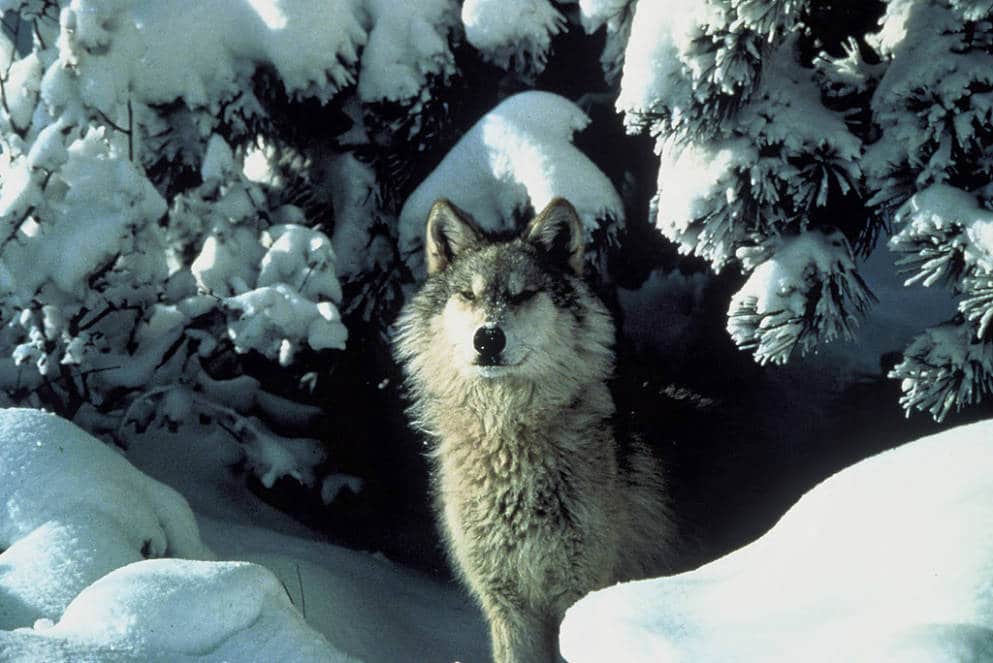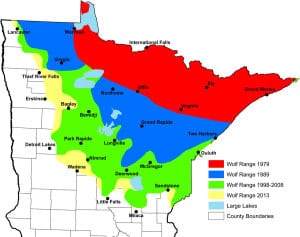
A federal judge ruled Friday that the wolves of the Great Lakes region must be immediately returned to federal protection, halting the hunting seasons that were established in Minnesota after wolves were removed from the Endangered Species List in 2012.
The ruling was decided in a lawsuit brought by animal and environmental groups, including the Humane Society of the United States. The groups objected to the wolf hunting seasons implemented immediately after the animals were de-listed. In 2011, the Minnesota legislature removed a 2000 law which would have required a five-year waiting period after de-listing before hunting was allowed.
“In the short time since federal protections have been removed, trophy hunters and trappers have killed more than 1,500 Great Lakes wolves under hostile state management programs that encourage dramatic reductions in wolf populations,” said Jonathan Lovvorn, senior vice president and chief counsel for animal protection litigation at The Humane Society, in a statement.
The judge’s recent decision means Minnesota’s wolves will be listed as “Threatened,” while Wisconsin and Michigan’s populations will be listed under the stronger “Endangered” status. This means it is now illegal in Minnesota to kill a wolf unless it is threatening human life, except for some limited trapping to cull populations.
Minnesota wolf advocates Howling for Wolves were also happy to hear the news.
“This is exciting news for the survival of the gray wolf population, which is a vital part of our ecology. We’re glad the reckless and unnecessary wolf hunt in Minnesota is over this year, and hope smart and non-lethal wolf management strategies will be implemented in the future,” said Howling For Wolves Founder and President Dr. Maureen Hackett in a statement.

Hunting organizations claimed the ruling ignored the fact that thousands of wolves now live in a region from which they were nearly extirpated.
“This is a completely illogical decision and entirely emblematic of how the animal-rights community continually manipulates the Endangered Species Act,” Evan Heusinkveld, U.S. Sportsmen’s Alliance Vice President of Government Affairs, said in a statement. “It’s clear that wolf populations have recovered – no one is debating that science – but a federal judge has now decided that wolves should again return to federal protection.”
There are an estimated 2,423 wolves in Minnesota, up from 750 animals in the 1950s, according to the Minnesota Department of Natural Resources. A total of 272 animals were shot or trapped during this year’s legal hunting season – exceeding the DNR’s target harvest of 250 animals. The agency said the additional kills should not significantly affect population, and no significant change in the population has been observed since hunting began in 2012.
DNR spokesman Chris Niskanen told Minnesota Public Radio News that the agency believes hunting can be done without reducing wolf numbers. “We’re highly invested in making sure that the wolf is protected in Minnesota. There’s no desire by the DNR to endanger the long term future of wolves in Minnesota. They’re an important part of the ecosystem,” Niskanen said.
The Wisconsin Department of Natural Resources issued a statement halting the state’s hunt, saying it was “disappointed.”
In her 111-page ruling, Judge Beryl Howell concluded by repeating that wolf policies have long been contentious, and the Fish and Wildlife Service may have had practical reasons for de-listing wolves, but, the Endangered Species Act “reflects the commitment by the United States to act as a responsible steward of the Earth’s wildlife, even when such stewardship is inconvenient or difficult for the localities where an endangered or threatened species resides.”

